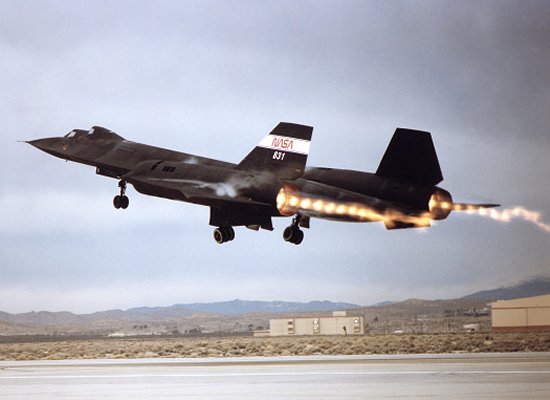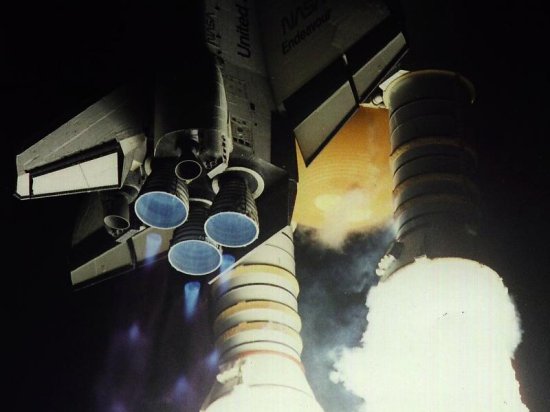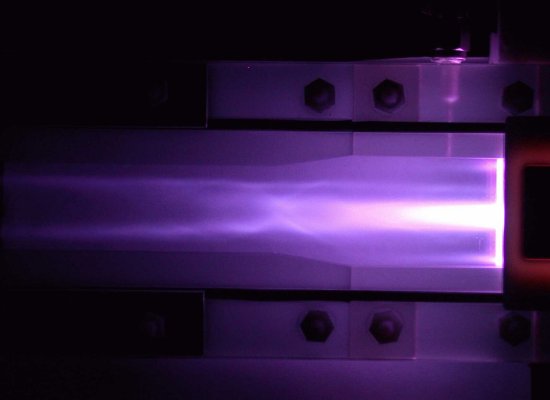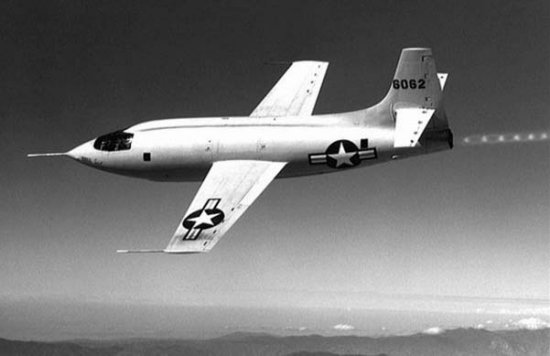|
||||||||||
|
|
||||||||||
|
||||||||||
|
|
||||||||||

In this case, the exit pressure of the exhaust plume is lower than the atmospheric pressure. As explained in a previous article about nozzles and pressure, this situation is referred to as overexpansion. Overexpansion is a common occurrence at low altitudes where the atmospheric pressure is high. This behavior is also often seen during the liftoff of rockets, like the Space Shuttle.

When a flow is overexpanded, the lower gas pressure within the exhaust compared to that of the external atmosphere causes the exhaust to be compressed or squeezed inward. This compression increases the pressure of the exhaust. However, the flow may be compressed too much so that its pressure exceeds the atmospheric pressure. As a result, the flow now expands back outward to reduce the pressure again. This process may also expand too far causing the internal pressure to again drop lower than ambient. Regardless, the difference between the internal and external pressures reduces each time the flow passes through one of these compression and expansion processes. Over time, the process of compression and expansion repeats itself until the exhaust pressure becomes the same as the ambient atmospheric pressure. In other words, the flow will repeatedly contract and expand while gradually equalizing the pressure difference between the exhaust and the atmosphere.
The method by which the flow accomplishes these compressions and expansions is through different kinds of waves that form the basis of supersonic fluid dynamics. Among these types of waves are oblique and normal shock waves, Prandtl-Meyer expansion waves, and Prandtl-Meyer compression waves. To better understand these waves and how they form, let us take a closer look at the shock diamond formation process as it occurs in the overexpanded flow shown below.

While exiting the nozzle, the flow near the centerline will be moving parallel to that centerline. However, the pressure of the ambient atmosphere beyond the free jet boundary is higher than that of the exhaust. This higher pressure forces the exhaust to turn inward towards the centerline. This turning is made possible through a type of wave called an oblique shock wave. Any shock wave causes a change in the pressure of a flow, an increase in this case. An oblique shock wave is named for the fact that it is inclined at an angle to the direction of the flow passing through it.
On the other hand, a shock wave that is perpendicular to the direction of the flow is called a normal shock wave. A normal shock can be seen in the above diagram when the flow again turns parallel to the centerline. This normal shock creates a Mach disk in the exhaust flow. Passing through this normal shock wave causes the temperature of the flow to increase, igniting any excess fuel present in the exhaust making it burn. It is this burning fuel that makes the Mach disk glow and become visible to create the ring pattern.
Like the oblique shock, this normal shock wave also increases the pressure of the exhaust gases. However, the flow becomes so compressed that the pressure is now greater than that of the ambient atmosphere. As a result, the flow begins to turn outward and the exhaust expands as it tries to equalize with the external air. This turning of the flow is accomplished through a series of expansion waves that reflect off the free jet boundary and towards the centerline. These waves cause the flow to turn outward and reduce in pressure. The expansion waves then encounter their "twins" from the opposite side of the nozzle at the centerline and reflect back outward towards the free jet boundary, also called the contact discontinuity. As the flow passes through these reflected expansion waves, it is turned parallel to the centerline and again reduces in pressure. These two sets of expansion waves are collectively referred to as an expansion fan.
The expansion fan decreases the pressure of the exhaust, but it is now lower than the ambient pressure again. As the expansion waves reach the contact discontinuity, they again reflect back inward to create compression waves and a compression fan. These compression waves force the flow to turn back inward and increase in pressure. If the compression waves are strong enough, they will merge into an oblique shock wave and form a new Mach disk similar to that near the nozzle exit. This series of compression and shock waves increase the pressure above the external air causing a new expansion fan to form, and so on. This process repeats itself again and again to create the series of Mach disks that we recognize as shock diamonds in the exhaust of a jet or rocket engine.

A similar process occurs in an underexpanded flow exiting from a nozzle at high altitude, like that pictured above. The sequence of compression and expansion is identical to that described for an overexpanded nozzle except that it begins with the creation of an expansion fan rather than oblique shock waves. This behavior causes the flow to billow outward initially rather than compress inward. Regardless, the subsequent series of expansions and compressions results in the same formation of shock diamond patterns downstream.

In an ideal gas, this process of expansion and contraction would continue on forever creating an infinite number of Mach disks. Real gases are not ideal, however, and friction created along the free jet boundary between the air and exhaust results in a turbulent shear layer. This layer creates a viscous damping that gradually dissipates the wave structure. This viscous friction eventually equalizes the pressure differences between the exhaust and ambient atmosphere so that the shock diamonds can no longer be formed.

Mach disks can appear in any supersonic exhaust, whether it is from a liquid rocket engine,
solid rocket motor, or jet engine. These shock diamond patterns can form in the
exhaust from an aircraft, a space launch vehicle, or a military missile. Perhaps the most famous photo ever taken
of shock diamonds was the above picture of Chuck Yeager's X-1 rocket
plane just moments after he first reached Mach 1.
- answer by Jeff Scott, 17 April 2005
Read More Articles:


|
Aircraft | Design | Ask Us | Shop | Search |

|
|
| About Us | Contact Us | Copyright © 1997- | |||
|
|
|||